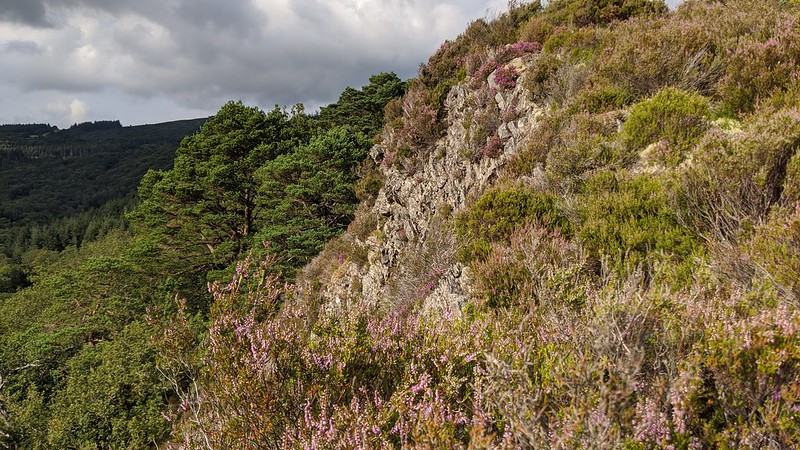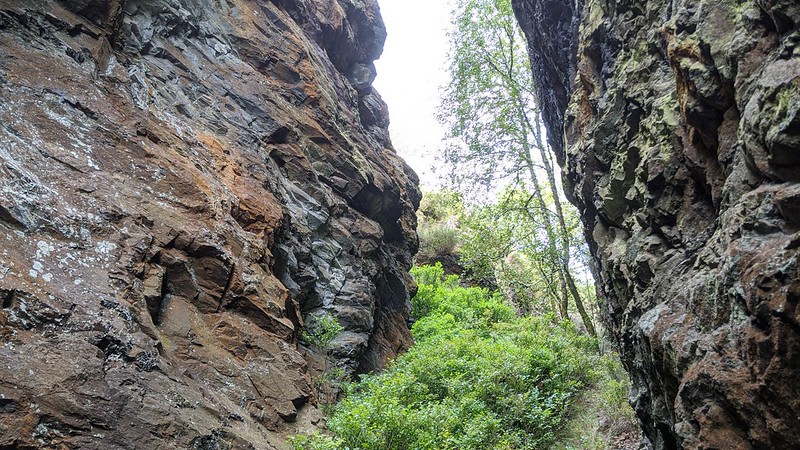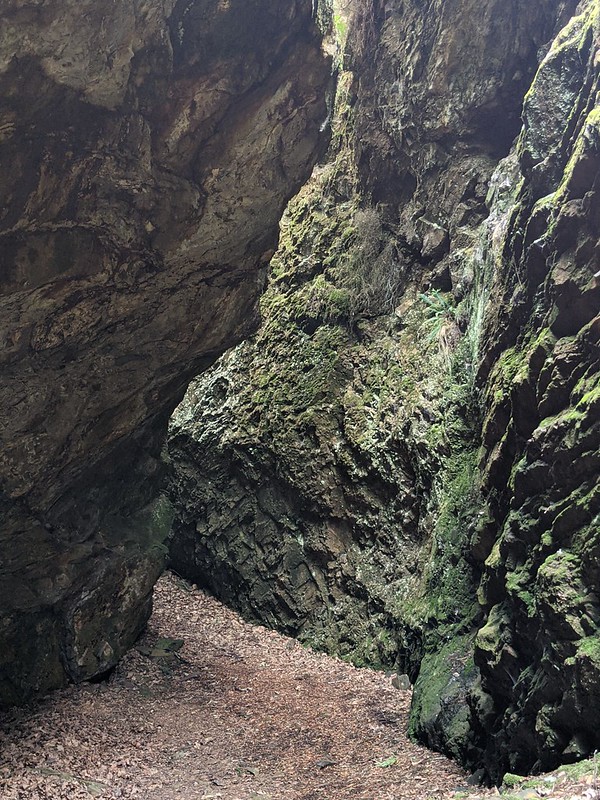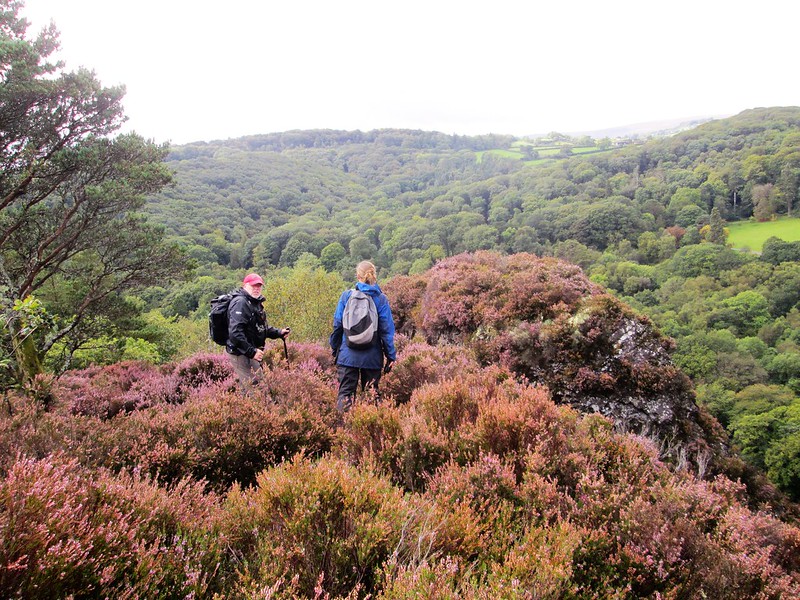TORS OF DARTMOOR
a database of both lesser- & well-known rocks and outcrops
Cleft RockCleft Tor
 Set in the private land of Ausewell Wood the magnificent Cleft Rock was until 1860 associated with the copper mining industry of Dartmoor. The area is said to be the inspiration for Sir Arthur Conan Doyle's 'Cleft Tor' in his classic 'The Hound of the Baskervilles'. The extract reads:  Briefly mentioned by Crossing when viewed from opposite, the summit rocks afford tremendous views over Holne Chase to the west and below this point is hidden a fantastic gunnis with a path leading through the cliff face. The walls here are still coated in a dark orange dust reminding the visitor of its mining heritage. The mine was known as both Hazwell and Hazel Mine, according to mindat.org; "Two parallel lodes of iron and copper extend through and alongside the rock and were developed here by open cast working and underground mining. The Cleft Rock itself (which appears is on current Ordnance Survey maps by this name) is a deep gunnis splitting the rock in two. Locally pronounced as 'Azel', the mine, then idle, was advertised for sale as Haswell Mine in 1763 and two years later, in 1765, appears on a map as the Hazel Mine. Workings at this time were from adit and shaft."  Whereas Ausewell Wood is now accessible thanks to a collaboration between The National Trust and The Woodland Trust, Cleft Rock and its neighbour to the north Raven Rock are off limits, between the beginning of March and the end of July, restrictions imposed under the Wildlife and Countryside Act of 1981, due it to being in close proximity to sensitive species of wildlife. The sites here are being monitored with trail cameras and/or CCTV so you are advised to respect any closures that are in place.  Currently, as at 2021, there is no public access to Cleft Rock due to concerns over the hazardous mine shafts, steep drops and unstable ground that are potentially dangerous, and a perimeter fence is the closest you can get. Should you wish to visit we would urge you contact the Woodland Trust.
| ||||||||||||||||||||||||||||